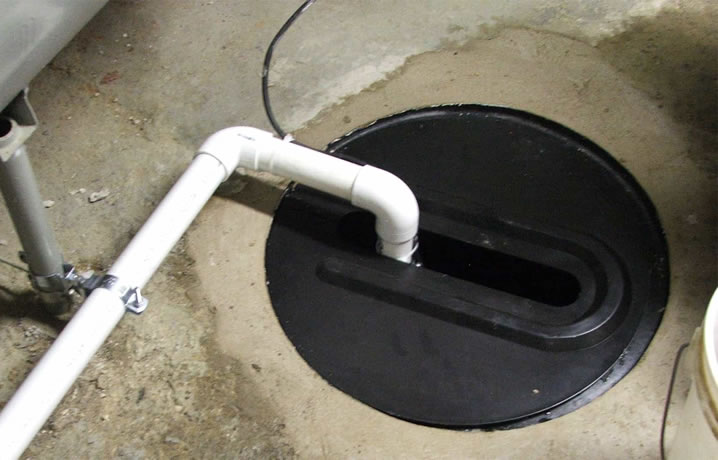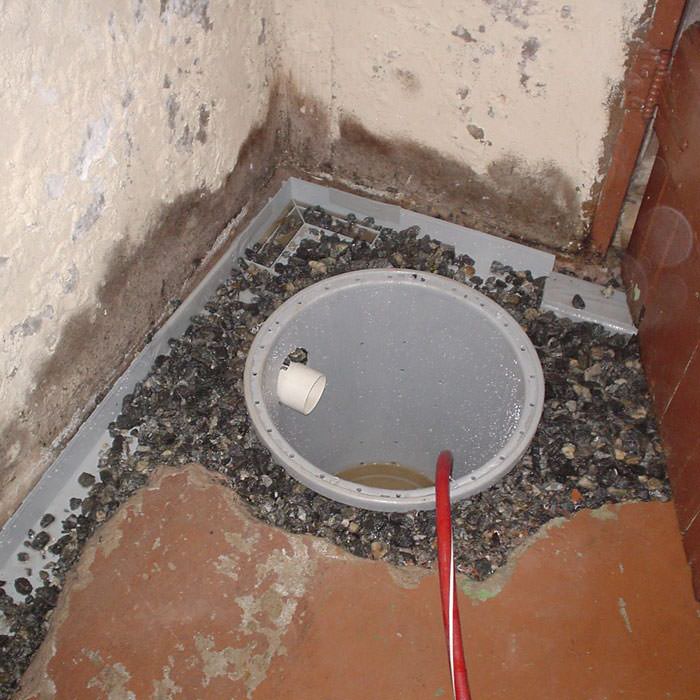They are making a number of good pointers on Cleaning & Maintenance Tips for Your Home's Sump Pump in general in the article followed below.

Sump pumps are critical parts in many homes, specifically in locations prone to flooding or extreme moisture. They aid prevent water damage by effectively removing excess water from cellars or crawl spaces. Nonetheless, like any other home appliance, sump pumps require regular maintenance to guarantee they work effectively when needed one of the most. Cleansing your sump pump is an essential part of its maintenance, and understanding exactly how to do it correctly can save you from expensive fixings and prospective disasters.
Intro
Keeping a tidy sump pump is important for its proper performance and durability. Ignoring this vital job can bring about obstructions, malfunctions, and ultimately, water damage to your residential or commercial property. For that reason, finding out how to cleanse a sump pump is vital for homeowners who count on these devices to keep their cellars dry and safeguarded.
Indicators of a Dirty Sump Pump
Knowing when your sump pump needs cleansing is vital for protecting against prospective malfunctions. Some typical indicators that show a dirty sump pump include unusual sounds throughout procedure, lowered water circulation, and noticeable debris in the pit. If you observe any of these signs and symptoms, it's important to cleanse your sump pump promptly to stay clear of any more issues.
Preparing for Cleansing
Prior to you start cleaning your sump pump, it's necessary to take some safety and security preventative measures. Start by shutting off the power to the pump to avoid any type of electric crashes. Additionally, use ideal protective gear, such as gloves and safety glasses, to safeguard on your own from dirt, debris, and prospective microorganisms.
Understanding the Sump Pump
Before diving right into the cleaning procedure, it's important to have a basic understanding of how a sump pump works. Usually set up in a pit or container listed below the cellar flooring, a sump pump consists of a number of crucial parts, including a pump, a float button, and a discharge pipe. When water accumulates in the pit, the float switch triggers the pump, which after that pumps the water out through the discharge pipeline, away from the structure's foundation.
Detailed Overview to Cleansing a Sump Pump
Shutting down the Power
Begin by disconnecting the power supply to the sump pump to stop any type of accidents while cleaning.
Looking For Correct Performance
Before reinstalling the pump, execute a fast test to make certain that the float button activates the pump correctly. Pour some water into the sump pit and observe the pump's procedure. If everything is operating appropriately, you can reconstruct the pump and reconnect the power supply.
Getting Rid Of Particles and Dust
Utilize a pail or an inside story to get rid of any noticeable debris, dust, or debris from the sump pit. Dispose of the debris correctly to avoid it from blocking the pump or the discharge pipeline.
Cleaning the Pump and Float Switch
As soon as the pit is clear of debris, meticulously remove the pump from the pit. Examine the pump and the float button for any kind of indicators of damages or wear. Use a soft brush or towel to cleanse the surface areas and get rid of any type of gathered gunk.
Flushing the System
After cleaning up the pump and float button, flush the sump pit with tidy water to get rid of any continuing to be dust or debris. This will certainly help ensure that the pump runs efficiently and efficiently.
Maintenance Tips to Keep Your Sump Pump Clean
In addition to regular cleaning, there are numerous upkeep tips you can comply with to keep your sump pump in optimum problem:
- Normal Examination: Examine your sump pump consistently for any kind of indicators of wear, damages, or clogs.
- Maintaining the Surrounding Area Clean: Make Sure that the location around the sump pit is without debris, dust, and blockages.
- Testing the Pump Occasionally: Evaluate your sump pump regularly by putting water right into the pit and observing its operation. This will certainly help you recognize any prospective issues before they escalate.
Final thought
Cleaning your sump pump is a critical aspect of its maintenance and ensures that it operates efficiently when you require it one of the most. By adhering to the actions described in this guide and integrating regular maintenance into your routine, you can extend the life expectancy of your sump pump and shield your home from water damages.
6 STEPS ON HOW TO CLEAN A SUMP PUMP PROPERLY
UNDERSTANDING SUMP PUMPS
Your sump pump plays a crucial role in protecting your home by managing and removing excess water. It primarily functions as a “shield”, guarding your basement against the damaging effects of water accumulation. The pump is housed in a sump pit in the lowest part of your basement, and its job is to pump out any water that collects there.
During heavy rainfalls or when snow melts rapidly, water can infiltrate your basement, posing potential risks like flooding, structural damage, and harmful mold growth. Here, the sump pump springs into action, pumping out the intruding water and directing it away from your home.
SAFETY FIRST
Before cleaning, remember to prioritize safety. Disconnect the sump pump from the power source to prevent any accidental electric shocks. Also, wear sturdy gloves to protect your hands from any sharp or dirty components within the pump.
REMOVE THE SUMP PUMP
After ensuring your safety, the next step is to remove the sump pump from its pit. Doing this might require careful maneuvering as you don’t want to damage any pump components. Once removed, clean the sump pit to remove any accumulated debris or sludge.
INSPECT THE PUMP
Inspect the pump for any visible signs of wear or damage. Check the power cord, float switch, and impeller housing. If any components look worn out or damaged, consider replacing them to ensure optimal performance.
CLEAN THE PUMP
Thoroughly clean the pump with warm, soapy water. Make sure to rid it of any dirt, gravel, or other debris that might impede its performance. You can use a toothbrush to clean the small, hard-to-reach parts of the pump.
REINSTALL THE SUMP PUMP
- Reinstall the pump into the sump pit
- Make sure it’s positioned correctly to remove the water effectively
- Once it’s back in place, reconnect it to the power source
TEST THE PUMP
Finally, pour some water into the pit to ensure the pump works correctly. It should start automatically and begin pumping out the water; if it doesn’t, check the power source and the positioning of the pump.
Remember, while cleaning your sump pump is an essential part of home maintenance, hiring a professional plumber for a thorough inspection and cleaning at least once a year is also important. This will ensure that your pump is in optimal condition, ready to protect your home from potential water damage.
BEST PRACTICES FOR CLEANING SUMP PUMP DISCHARGE PIPES
- Regular Inspection: Regularly inspect your discharge pipes, especially during heavy rainfall or snowmelt periods. Look for any signs of blockage or damage. Early detection of problems can prevent serious issues down the line.
- Periodic Cleaning: Over time, sediment and debris can accumulate in the discharge pipes, impeding the flow of water. Regular cleaning helps keep the pipes clear and functioning efficiently. You can use a high-pressure water jet to effectively clean the pipes.
- Insulation During Winter: In colder climates, discharge pipes can freeze, blocking the outflow of water. Protect your discharge pipes from freezing temperatures by insulating them with foam pipe insulation. This will ensure the sump pump can continue to discharge water even in freezing conditions.
- Proper Positioning: The discharge pipe should be positioned to direct water away from your home’s foundation. Improper positioning can lead to water seeping back into the basement. Ensure the pipe is long enough and angled correctly.
- Installation of a Check Valve: A check valve prevents water from flowing back into your sump pit after the pump has pushed it out. Installing a check valve helps maintain the efficiency of your sump pump and reduces the risk of flooding.
- Minimize Pipe Turns: Every curve or turn in the discharge pipe can decrease the efficiency of water flow. By minimizing turns and bends in your discharge pipe, you can increase the efficiency of your sump pump.
https://www.fullspeedplumbing.com/how-to-clean-a-sump-pump-properly9999/

We were guided to that report on How to Care for Your Sump Pump through someone on our other web property. Do you know about somebody else who is fascinated by the niche? Take a moment to share it. Thanks for going through it.
Get Your Estimate Now
Comments on “The Guide to Properly Cleaning a Sump Pump”